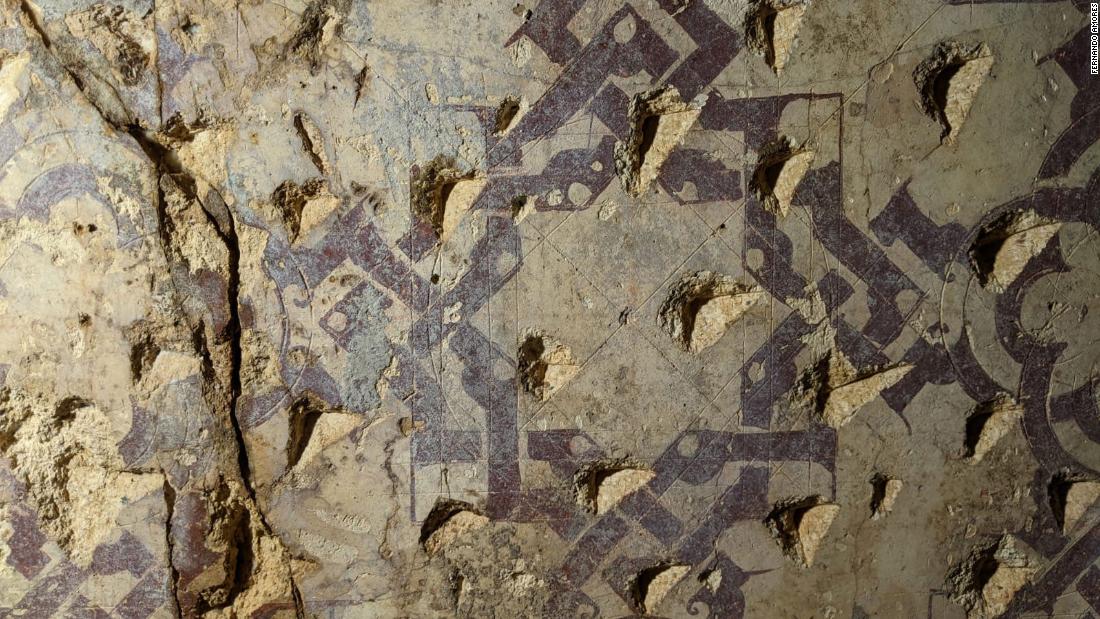
Archaeologists have discovered the remains of a 12th-century bathhouse in a popular bar in the city of Seville, southern Spain.
Cerveceria Giralda has been operating in the heart of the city since 1923, but the bar is housed in a building with a much longer history.
While the vaulted ceilings suggested it could have been a bathhouse, and historical records said there had been one in the area, no one had found concrete evidence of its existence, archaeologist Fernando Amores of the University of Seville told CNN Thursday. .
Now skylights and red geometric paintings from the 12th century have been uncovered during recent renovation works.

Restoration of skylights and paintings found under decoration installed in the 1920s. Credit: Fernando Amores
In the 12th century, Seville was ruled by the Almohad Caliphate, a North African Berber Muslim empire that at the time controlled much of the Iberian Peninsula – today’s Spain and Portugal.
Amores was part of a team of experts that worked on the restoration of what he called a “very unusual” find.
The skylights are made in the shape of eight-pointed stars, and the red-ocher-colored paintings form interconnected geometric patterns.

There are four types of skylights in different sizes. Credit: Fernando Amores
The star-shaped windows are typical of hammams, and there are four different types in different sizes, Amores said. However, the fact that the paintings completely covered the walls and ceiling is unusual, he added.
“It’s a beautiful sky,” said Amores, with light streaming through the windows reminiscent of the stars in the night.
The complicated craftsmanship shows the importance of the bathhouse, which was located close to the city’s main mosque during construction, he said.
There is still more to be restored, Amores said, but additional funding is needed.
Archaeologists also radiocarbon dating the stucco – a fine plaster – to get a more accurate construction date, Amores added.

Star-shaped windows are typical of hammams. Credit: Alvaro Jimenez
The project was a collaboration between the building’s owners, the owners of the bar and the team of archaeologists, Amores said, explaining that the whole process was a triumph of collaboration.
“We are very happy,” he said.
The owners decided to do some renovation work last summer, a spokesperson for the bar told CNN. Until then, the original features were covered by a decorative layer applied at the beginning of the 20th century.
When the work uncovered evidence of the bathhouse, archaeologists were called in to supervise, the spokesman added. The baths had at least three rooms, they said, which are now used as kitchens and two dining rooms.
Architect Francisco Diaz told local Canal Sur TV station that archaeologists found nothing interesting at first, but then one skylight was found in the ceiling. “From there it was like pulling back a veil and all the skylights started to appear,” said Diaz.
Cerveceria Giralda serves tapas and beer and is a household name in Seville.
“We think it (the bar) could open to the public within a month, combining restaurant activities with possible visits at certain times,” said the spokesman.